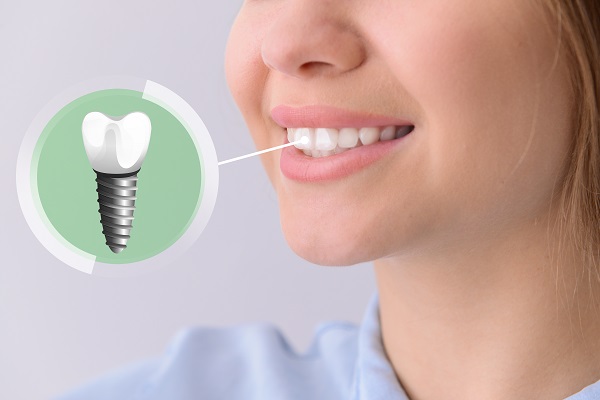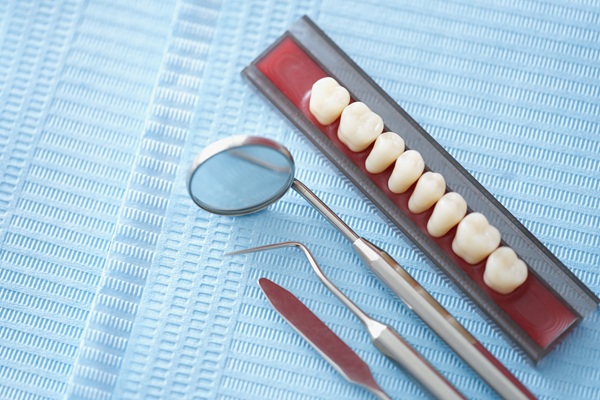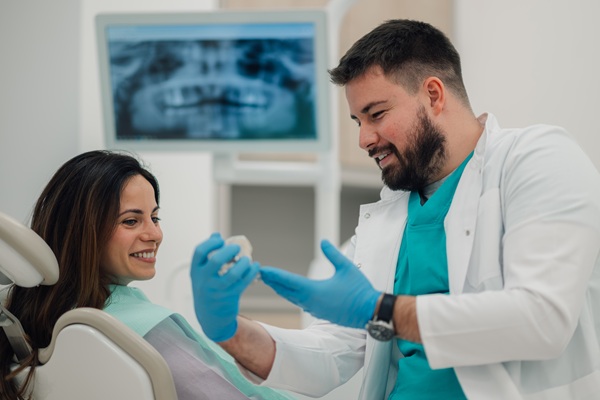How Long Does It Take to Heal From Dental Implant Placement?

Dental implant placement requires a period of recovery. Understanding the expected amount of time that it takes to recover and learning useful tips on how to help your mouth heal faster are certainly helpful when preparing mentally and physically for the dental implant placement and aftercare process.
How dental implant placement and aftercare works
Dental implants are placed into the jaw through a minor surgical procedure. The patient does not feel anything during the procedure due to anesthesia, but being able to manage the discomfort, prevent infection and ensure that the implant can properly fuse with the jaw are essential. The following is a review of dental implant placement and what to expect during and after the placement procedure.
A review of dental implants
A dental implant is a metal post that is placed into the jawbone beneath or below a missing tooth (or multiple missing teeth). They serve as an anchor or root for a replacement tooth, which is typically a crown for single tooth replacement. They are non-removable (unlike dentures) and last much longer than dentures or fixed bridges on average. They also offer exceptional functionality benefits, allowing the patient to eat how they desire. Patients can also care for their dental implants the same way as they would natural teeth.
What to expect during implant placement
Before implant placement, the patient may require a bone graft procedure. This ensures that there is enough bone in the jaw to support the implant. Once the mouth is ready, the implant placement procedure is scheduled. This procedure involves making an incision into the gums, drilling a small hole into the jawbone and placing the dental implant post into the jaw. Once the mouth heals, the abutment and replacement tooth are placed.
What to expect after implant placement
The patient does not feel anything during the procedure, but there is typically pain, swelling, minor bleeding and soreness after implant placement. The patient can manage the pain through pain relief medication, eating a soft diet and practicing good oral hygiene. It typically takes between seven and 10 days for the mouth to heal, and the patient can return to normal activity afterward. The implant must go through osseointegration, which refers to the process of the implant fusing together with the jawbone. This takes anywhere from two to six months.
Tips for making the implant heal faster
As mentioned, pain relief medication (anti-inflammatory), a soft diet and good oral hygiene can speed up the recovery process. It is also encouraged to avoid activities that may result in a blow to the face and subsequently damage the implant or affected area. Patients should also make a strong effort to make all scheduled follow-up visits without rescheduling.
Talk to a licensed dental implant dentist today
Our dental team helps patients through the dental implant placement process, ensuring that they are comfortable and have all their questions answered along the way. Call us or send us an email today to get the treatment process started.
Request an appointment here: https://shdentalva.com or call Safe Harbor Dental at (757) 333-0087 for an appointment in our Chesapeake office.
Check out what others are saying about our dental services on Yelp: Dental Implants in Chesapeake, VA.
Related Posts
Dental implants are a highly effective solution for replacing missing or damaged teeth. They offer a permanent and durable option that not only restores the function of the teeth but also enhances the smile's appearance. As a modern and advanced treatment, dental implants have become the preferred choice for individuals seeking a long-lasting and natural-looking…
A dental bridge is a popular solution to replace one or more missing teeth, restoring the function and appearance of your smile. However, you may be wondering how long a dental bridge will last. While several factors will influence the longevity of the dental bridge, understanding the expected lifespan and necessary care can help you…
A preventive dentist promotes long-term oral wellness by focusing on early detection, regular checkups, and proactive measures to protect teeth and gums from disease. By prioritizing prevention, you can avoid many dental issues before they even begin. Explore some of the most frequently asked questions about preventive dentistry, gain valuable insight that can help you…
Dental crowns are widely used to restore damaged or weakened teeth, providing durability, strength, and a natural appearance. A dental crown can last many years with proper care, but it may face complications over time, like any dental restoration. Understanding these common issues and how to address them can help patients maintain their crown's health…


